LaCie Porsche Design Mobile Type-C External HDD Capsule Review
by Ganesh T S on March 31, 2016 8:00 AM EST
Seagate launched a host of direct-attached storage products under the LaCie brand name at CES earlier this year. Though the LaCie Chrome USB 3.1 Gen 2 Type-C external SSD was easily the most impressive announcement of the lot, it is the LaCie Porsche Design Mobile which is making it to the market first. The unit started shipping last week. Once the review unit reached our hands, it was easy to see why. It turns out that the internal drive is the Seagate / Samsung Momentus ST4000LM016, the same as the one we saw in the Seagate Backup Plus Portable last year. This 2.5" drive has a 15mm thickness, making it suitable for use in bus-powered external drive enclosures.
Important aspects of the drive include:
- 16 MB buffer
- 5400 RPM spindle speed
- SATA III 6 Gbps interface
It appears that the ST4000LM0016 uses five platters with a 800GB/platter design to achieve the capacity point. The USB 3.0 bridge chip also supports UASP and S.M.A.R.T passthrough. The LaCie Porsche Design Mobile 4TB version has dimensions of 128 mm x 84 mm x 21 mm and weighs 315 grams. It comes with a quick start guide, as well as a USB 3.1 Gen 2 Type-C to Type-C cable (rated for SuperSpeed USB 10 Gbps) and a Type-C to Type-A cable.
Compared to the Seagate Backup Plus Portable, the Porsche Design Mobile P9227 external hard drive brings the following updates:
- Stylish industrial design for the aluminum enclosure gives it a premium look and feel (tying in closely with the LaCie branding message)
- Redesigned setup process for the average consumer base to be able to use the drive with both Mac and Windows systems.
- Changes in bundled features and software
- Replacement of the micro-B USB 3.0 port with a Type-C USB 3.1 Gen 1 port capable to delivering up to 5 Gbps of throughput
The industrial design of the unit is in line with what we have come to expect from LaCie's product lines designed by Porsche Design. The enclosure is fully aluminum and the contours are quite pleasing. The product presents a premium look and targets LaCie's traditional consumer market quite nicely. Thanks to the bundled Type-C to Type-A cable, the product is compatible with both traditional USB Type-A and the new Type-C ports.
Setup Impressions
The product's setup process is optimized for consumers who are not particularly tech-savvy, and don't want to be bothered with partition tables and other such things. Upon connecting to a computer, a 260MB FAT32 partition with the LaCie setup program gets mounted.
The Windows setup program allows the end-user to configure multiple partitions, if necessary, for use with multiple operating systems (FAT32 for Windows, Mac and Linux, and NTFS for Windows). The bundled software suite includes Genie Timeline Free (a backup software for Windows) and LaCie's Desktop Manager (a configuration / management software for LaCie devices in the local network). The gallery below presents some of the other options in the setup process.
DAS Benchmarks
The LaCie Porsche Design Mobile P9227 4TB drive was formatted in NTFS for our benchmarking process. In order to evaluate the DAS aspect of the unit, we utilized the testbed outlined in the table below to test the performance. One of the USB 3.1 ports enabled by the Intel Alpine Ridge controller was used to connect the unit to the system.
| AnandTech DAS Testbed Configuration | |
| Motherboard | GIGABYTE Z170X-UD5 TH ATX |
| CPU | Intel Core i5-6600K |
| Memory | G.Skill Ripjaws 4 F4-2133C15-8GRR 32 GB ( 4x 8GB) DDR4-2133 @ 15-15-15-35 |
| OS Drive | Samsung SM951 MZVPV256 NVMe 256 GB |
| SATA Devices | Corsair Neutron XT SSD 480 GB Intel SSD 730 Series 480 GB |
| Add-on Card | None |
| Chassis | Cooler Master HAF XB EVO |
| PSU | Cooler Master V750 750 W |
| OS | Windows 10 Pro x64 |
| Thanks to Cooler Master, GIGABYTE, G.Skill and Intel for the build components | |
Our testing methodology for DAS units takes into consideration the usual use-case for such devices. The most common usage scenario is transfer of large amounts of photos and videos to and from the unit. The minor usage scenario is importing files directly off the DAS into a multimedia editing program such as Adobe Photoshop. Prior to taking a look at the real-life benchmarks, we first check what ATTO and CrystalDiskMark have to report for the LaCie Porsche Design Mobile P9227.
In order to tackle the first real-life use-case, we created three test folders with the following characteristics:
- Photos: 15.6 GB collection of 4320 photos (RAW as well as JPEGs) in 61 sub-folders
- Videos: 16.1 GB collection of 244 videos (MP4 as well as MOVs) in 6 sub-folders
- BR: 10.7 GB Blu-ray folder structure of the IDT Benchmark Blu-ray (the same that we use in our robocopy tests for NAS systems)
| LaCie Porsche Design Mobile P9227 4TB robocopy Benchmarks (MBps) | ||
| Write Bandwidth | Read Bandwidth | |
| Photos | 99.12 | 78.38 |
| Videos | 92.65 | 93.93 |
| Blu-ray Folder | 98.29 | 90.79 |
The above benchmark run was also instrumented to record the drive temperature as well as instantaneous transfer rates during the process. The internal disk temperature was only slightly more than 40 C even after more than 127 GB of writes and 127 GB of reads continuously.
For the second use-case, we take advantage of PC Mark 8's storage bench. The storage workload involves games as well as multimedia editing applications. The command line version allows us to cherry-pick storage traces to run on a target drive. We chose the following traces.
- Adobe Photoshop (Light)
- Adobe Photoshop (Heavy)
- Adobe After Effects
- Adobe Illustrator
Usually, PC Mark 8 reports time to complete the trace, but the detailed log report has the read and write bandwidth figures which we present in our performance graphs. Note that the bandwidth number reported in the results don't involve idle time compression. Results might appear low, but that is part of the workload characteristic. This is not the intended use-case for portable hard drives, but the results are just presented here for the sake of completeness.
| LaCie Porsche Design Mobile P9227 4TB PCMark8 Storage Benchmarks (MBps) | ||
| Write Bandwidth | Read Bandwidth | |
| Adobe Photoshop (Light) | 90.81 | 4.06 |
| Adobe Photoshop (Heavy) | 104.15 | 5.24 |
| Adobe After Effects | 70.82 | 4.14 |
| Adobe Illustrator | 86.57 | 4.10 |
Power Consumption
Evaluation of the power consumption of the drive was done using Plugable's USBC-TKEY. Our test procedure and setup are outlined here.
The drive idled at around 2.12 W, while the peak power consumption was 4.05 W. So, it might be a prudent idea to not operate the drive off a bus-powered hub in case there are other USB peripherals sharing power from the same port.
Concluding Remarks
The LaCie Porsche Design Mobile P9227 external hard drive continues LaCie's tradition of bringing a premium look and feel to top-of-the-line PC and Mac accessories. The industrial design of the unit is definitely praiseworthy. Consumers who value aesthetics and a premium look/feel for their computing accessories might want to give the LaCie Porsche Design Mobile drive a try. In addition, the Type-C interface ensures that the drive can be easily used with Type-C-only devices such as the MacBook. Power delivery is not applicable to the Porsche Design Mobile, since the unit is bus-powered. The externally powered desktop version supports USB-PD, though. The bundled Type-C to Type-A cable ensures that the drive can work equally well with any legacy USB port also.
The LaCie Porsche Design Mobile P9227 4TB is currently available on Apple.com for $230. The other option for consumers looking for a 4TB bus-powered portable drive is the Seagate Backup Plus Portable 4TB version which is currently on sale for $120. In addition to having the same performance for real-life workloads (the drive inside both the units are the same, after all), the Backup Plus Portable also comes with some add-on software features such as Lyve and 200GB of online cloud storage for 2 years. Without doubt, the Backup Plus Portable provides the best value for money. However, LaCie's target market for the Porsche Design Mobile drive is unlikely to give much weight to the value proposition aspect.


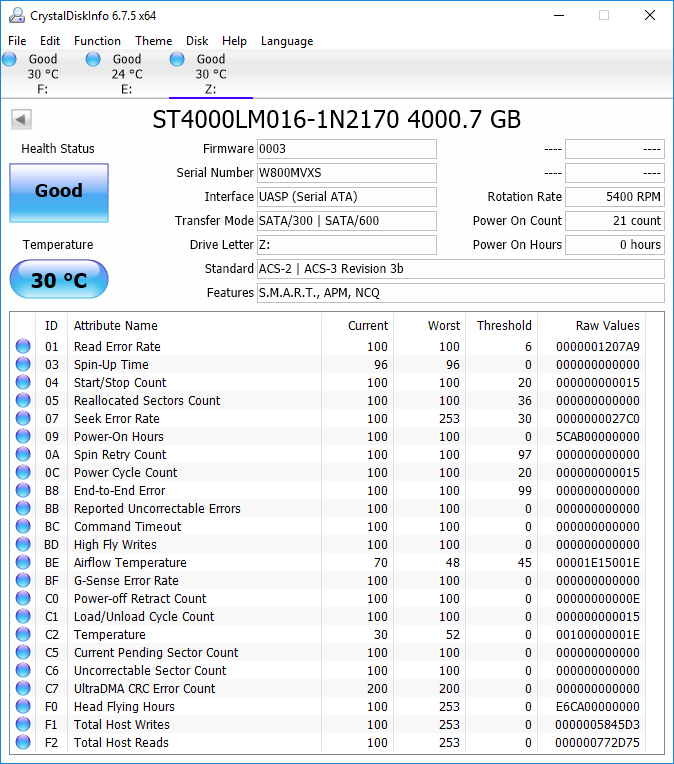

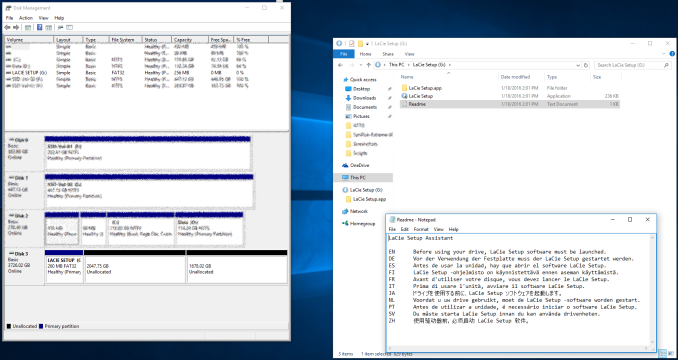






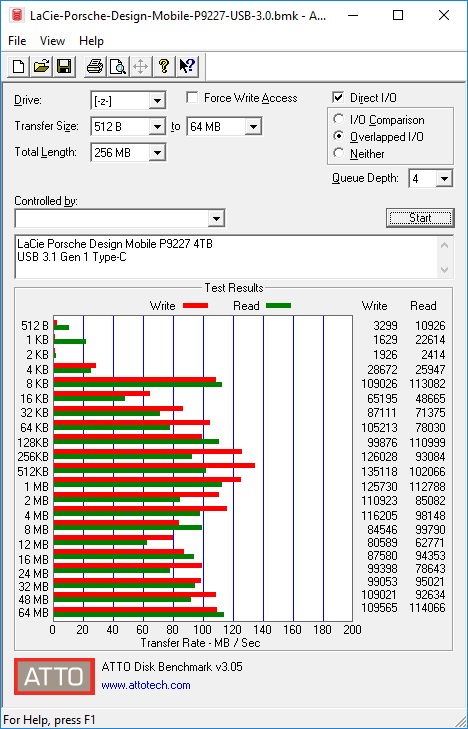
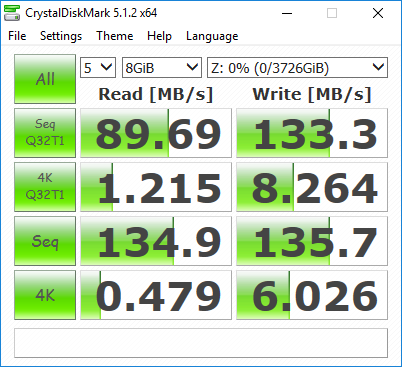
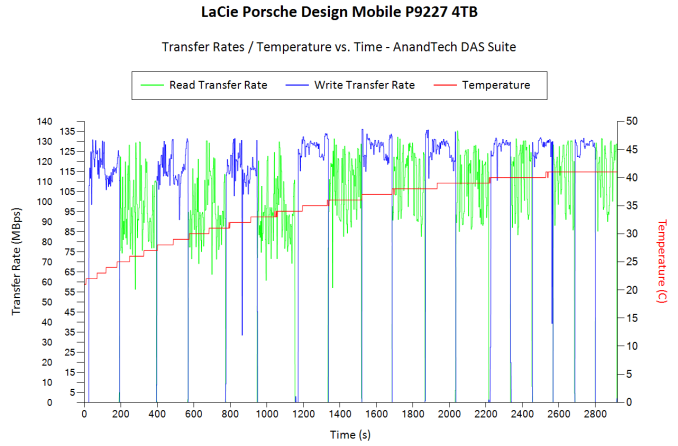
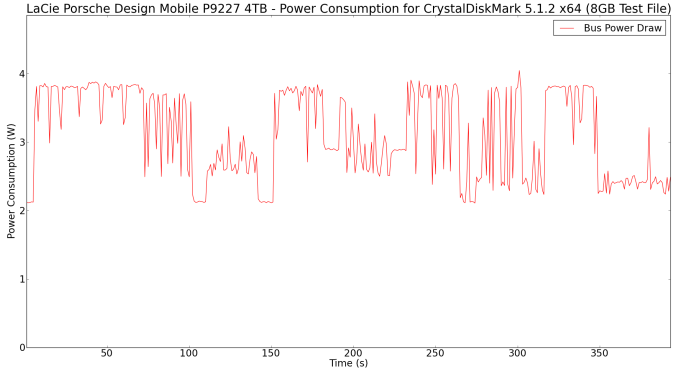








12 Comments
View All Comments
nathanddrews - Thursday, March 31, 2016 - link
Is it compatible with my Acer Ferrari One laptop and Lamborghini Aventador Wireless Mouse? I need to know, pls halp.Samus - Thursday, March 31, 2016 - link
Exactly what compelling advantage does this have over normal USB 3.0? It even uses a run of the mill USB UASP bridge chip. I mean with the drive LaCie used (a 5400RPM Seagate laptop drive) USB 2.0 wouldn't even bottleneck it much lmfao. 90MB/sec read!? This must be an SMR drive?extide - Thursday, March 31, 2016 - link
Probably not SMR at that platter density, and also this is only 5400 RPM. Also SMR doesnt really affect sequential read speeds.DanNeely - Thursday, March 31, 2016 - link
It's 135 mb/sec in a pure sequential read. (High queue depth can help SSDs; but for spinning rust it introduces some seeks which slow everything down noticeably.)It's about 3.3x faster than the ~40mb/sec that USB2 maxes out at.
Using 3.1 gen 2's only benefit is in potentially keeping costs down by allowing them to share more parts with the SSD member of the family which could benefit from the doubled bandwidth.
takeshi7 - Thursday, March 31, 2016 - link
You're dumb if you think 90MB/s won't bottleneck USB 2.0Arnulf - Thursday, March 31, 2016 - link
Clueless kids such as yourself really shouldn't be allowed to post here.extide - Thursday, March 31, 2016 - link
Now all we need is a 2.5" 4TB drive in less than 15mm thickness! My laptop will even take the 12.7mm ones, but 9mm would be even better.zodiacfml - Friday, April 1, 2016 - link
USB 3.1 HDD. An oxymoron to me.ganeshts - Friday, April 1, 2016 - link
USB 3.1 Gen 1 = USB 3.0 = Makes a lot of sense for HDDs with ~100 MBps transfer ratesUSB 3.1 Gen 2 is the 10Gbps version that doesn't make sense for single HDDs.
This is USB 3.1 Gen 1 with a Type-C interface - definitely, a welcome product in the market, with many computing platforms coming up with Type-C ports.
Mobilus - Saturday, April 2, 2016 - link
Yes, the Type-C is especially interesting for external 3.5" HDDs. Case in point is Seagate's Innov8. Since Type-C delivers up to 15 W there is no need for an external power supply.